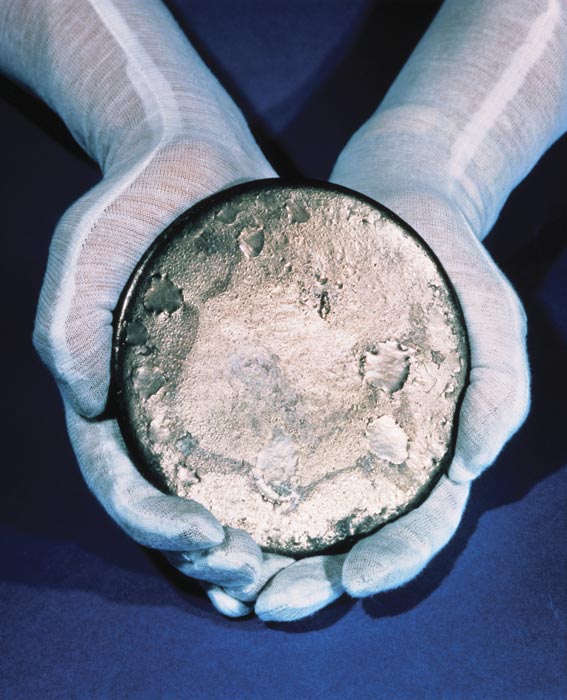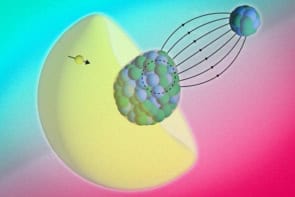Uranium Wars: The Scientific Rivalry That Created the Nuclear Age
Amir Aczel
2009 Palgrave Macmillan
£18.99/$27.00 hb 256pp

Enrico Fermi was a brilliant physicist, but he did occasionally get things wrong. In 1934 he famously bombarded a sample of uranium with neutrons. The result was astounding: the experiment had, Fermi concluded, produced element 93, later called neptunium. The German physicist Ida Noddack, however, came to an even more spectacular conclusion, namely that Fermi had split the uranium nucleus to produce lighter elements. Noddack’s friend Otto Hahn judged that idea preposterous and advised her to keep quiet, since ridicule could ruin a female physicist. She ignored that advice, and was, indeed, scorned.
This incident is important for two reasons. First, had physicists taken Noddack seriously, then Hitler might have got himself an atom bomb. As it turned out, Noddack was not vindicated until late 1938 – a crucial delay. Since a male scientist would probably have encountered a more sympathetic ear, the world can be thankful that physics was still riddled with misogyny in 1934.
The episode is also important because it is missing from Amir Aczel’s Uranium Wars. The omission may seem small, but is unfortunately indicative of the author’s inability to recognize what makes a good story. Aczel promises a “suspenseful” account but delivers instead a rather banal book drained of drama. Since so many gripping and immensely readable histories of atomic physics have been produced, there is little point wasting time on this one.
Aczel’s title refers to the “scientific intrigue” behind the race to unlock the atom’s power. That is certainly an interesting aspect of atomic history, but it is misleading to emphasize it. Far more important than rivalry was co-operation; immense danger arose because physicists were pathologically nice to each other. The Hungarian émigré Leo Szilard recognized this problem, warning as early as 1937 that co-operation had ominous political ramifications, since the Germans could not be trusted with the secrets of the atom.
Aczel also tends to leap to massive conclusions from mere shards of evidence. The fault is most noticeable in his discussion of Hiroshima and Nagasaki. True, his basic argument – that the bombings were not justified, since Japan was ready to surrender – has merit. However, he provides little evidence to support his position, and other writers have advanced it far more convincingly. The same can also be said for Aczel’s contention that the bombs were in truth directed against Russia – the first blows of the Cold War. Again, this argument has merit, but the author neglects to strengthen it with a discussion of, for example, the Yalta accords of February 1945, when Stalin agreed to attack Japan in exchange for territorial concessions. Soviet troops did indeed invade Manchuria on 9 August, hours before Nagasaki was hit. The quick end to the war allowed the Americans to renege on Yalta and, in turn, deny the Soviets a say in postwar Japan. Given what happened in Eastern Europe after 1945, that seems significant. It might not be sufficient justification for the bombings, but it deserves more analysis.
Aczel loves phrases like “it can now be revealed”. Unfortunately, though he promises startling revelations, he delivers none. A case in point is the famous meeting in Copenhagen in 1941 when Werner Heisenberg conveyed a rather cryptic message about Germany’s atomic project to Niels Bohr. Aczel offers what he claims is a new interpretation based on Bohr’s correspondence – but that material has been available since 2002, and many historians have already mined it.
Aczel ends with two woefully simplistic paragraphs about the future. “It cannot be stressed enough”, he argues, “that the MAD doctrine…will not work in the case of Iran.” Why not? The theory of mutually assured destruction (MAD) assumes that no leader will use the bomb since complete annihilation of their country will result. For 60 years that doctrine has forced leaders, even unstable ones, to act rationally. Granted, President Ahmadinejad of Iran might be incurably irrational, but it is equally possible that the bomb will force sanity upon him. Whatever the case, the problem deserves analysis, not snap judgments.
Finally, Aczel argues that nuclear power has immense potential “if we can solve the…problems of nuclear proliferation, nuclear waste and nuclear safety”. Those are very big “ifs”. A few years ago, guards looking after Ukrainian stocks of plutonium were paid in potatoes. The temptation to sell the stuff is huge. As for the safety of reactors, I am reminded of the technician at Three Mile Island – the site of the US’s worst nuclear accident – who confessed to “a feeling of awe and humility that the technology we thought was foolproof wasn’t”.
Complex problems do not lend themselves to simplistic conclusions. The great danger of this book is that nuclear novices may conclude that it is the entire gospel. In fact, the atomic story is much more dramatic than Aczel suggests, and in that drama lurk not only an entertaining tale, but also some important lessons for our future.



